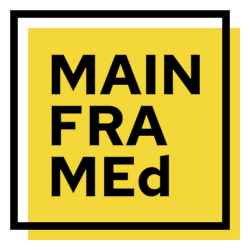Controlling TCP/IP
Code: CTCPIPBeen everywhere and found nothing…
Do you need a Custom Course or Solution?
Description
Corporate networks are mission-critical and it is vital that staff are well-trained in the way they work.
This course is for all personnel who are responsible for the management, design, implementation, growth, and troubleshooting of TCP/IP networks. Those with responsibility for security and disaster recovery will also benefit.
Audience
Corporate networks are mission-critical and it is vital that staff are well-trained in the way they work.
This course is for all personnel who are responsible for the management, design, implementation, growth, and troubleshooting of TCP/IP networks. Those with responsibility for security and disaster recovery will also benefit.
Prerequisites
While completion of our Understanding TCP/IP course is not a prerequisite, it is assumed that all students will have an equivalent level of knowledge.
Objectives
After completing this class, students will be able to:
- Describe in detail the TCP/IP architecture and protocols together with their use in corporate networks.
- Describe the present state of routing and understand proposed changes to IP, and their implications.
- Set up and maintain a domain system within a company network, and link a company internet to the global Internet.
- Understand the security issues concerning today's networks, whether Internet connected or otherwise, and advise management on IT security policy.
- Understand the issues surrounding network performance and troubleshooting, as well as the network monitoring tools that are available to help address these issues.
- Discuss how the Internet can be used to improve a company's information gathering and external dissemination strategies.
Topics
Review of the Understanding TCP/IP Course
IP over LANs and WANs.
Routing
Methodology of Routing.
RIP.
OSPF.
Subnets and Supernets.
CIDR.
The effect of IPv6.
Domains
Setting up your DNS.
The implications of linking to the Internet.
Name Servers.
Mail
MIME.
Compression routines.
POP.
Mail gateways and the problems of other address structures.
User Agents.
Netequitte.
Finding an Email address.
Network Security
The dangers and threats.
Firewalls and other preventative strategies.
Viruses and other nasties.
Modems can be dangerous.
Encryption.
Resilience.
The importance of Disaster Recovery Plans.
Where to go for help.
Network Performance
User expectations.
Measures of performance.
Causes of degradation and delay.
Queueing theory.
Bottlenecks.
Long fat pipes.
Tuning applications.
Network Management
Elements of network management.
Architecture of SNMP.
MIB structure.
ASN.1 and BER.
SNMP Version 2.
Manager of Managers.
Network Management Forum.
Troubleshooting
A Methodology.
Isolating the problem.
Examining tables.
Verifying servers.
Network analyzers.
Time Domain Reflectometers.
Some possible scenarios.
Price (ex. VAT)
Duration
Delivery methods
- Classroom
- On-site (at your location)
- Virtual (instructor online)
